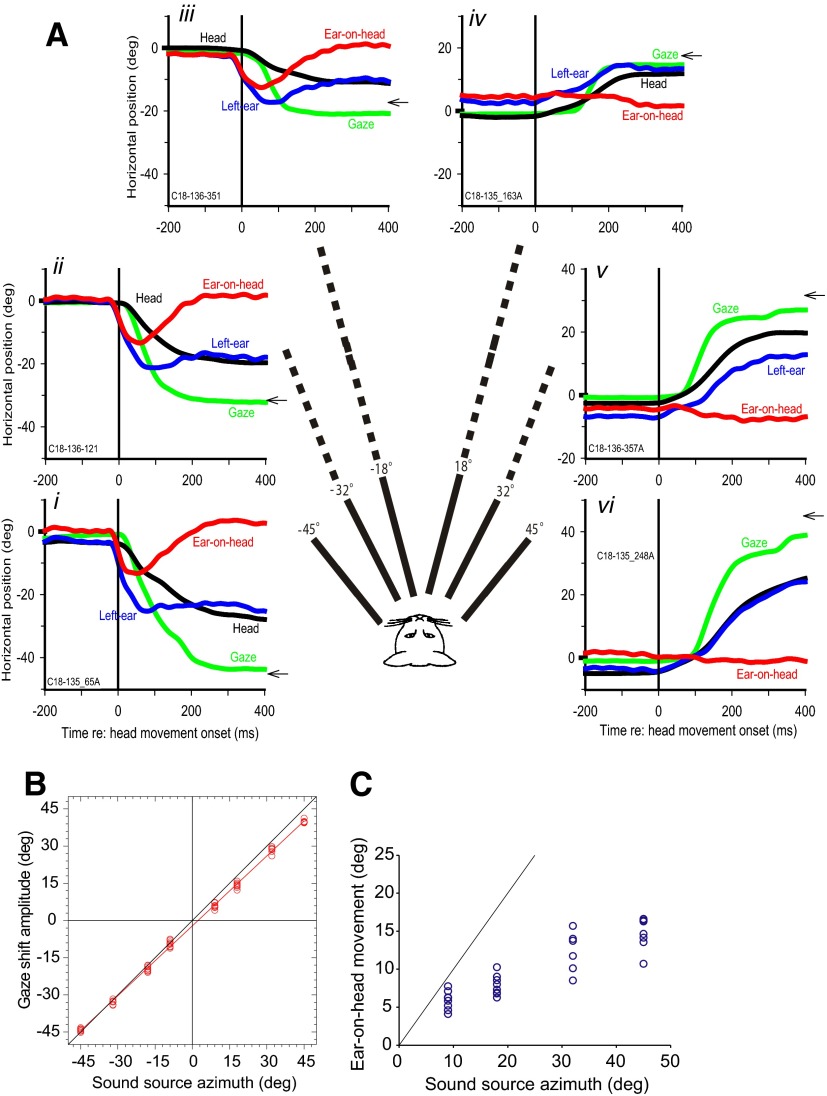FIG. 1.
Gaze, head, pinna, and ear-on-head movements to 6 different sound sources. A: gaze (green), head (black), left pinna (blue), and ear-on-head (red) positions in space for 1 cat as a function of time with respect to the onset of the head movement for 6 acoustic targets along the horizontal plane (i–vi). Ear-on-head position was computed by subtracting the head from the pinna movement. The location of the target is indicated by the small arrow on the right axis. Ear-on-head movement compensates for the head movement and returns to a centered position on the head at the end of the gaze shift. B: final gaze shift amplitude as a function of sound source azimuth. Gaze shifts to auditory targets are accurate to within a few degrees. C: maximum ear-on-head movement amplitude for 4 ipsilateral targets as a function of sound source azimuth. The line is at unity gain and represents what would be expected if the pinna movements were identical to the target position. Pinna movements are goal directed though they undershoot the target considerably.

